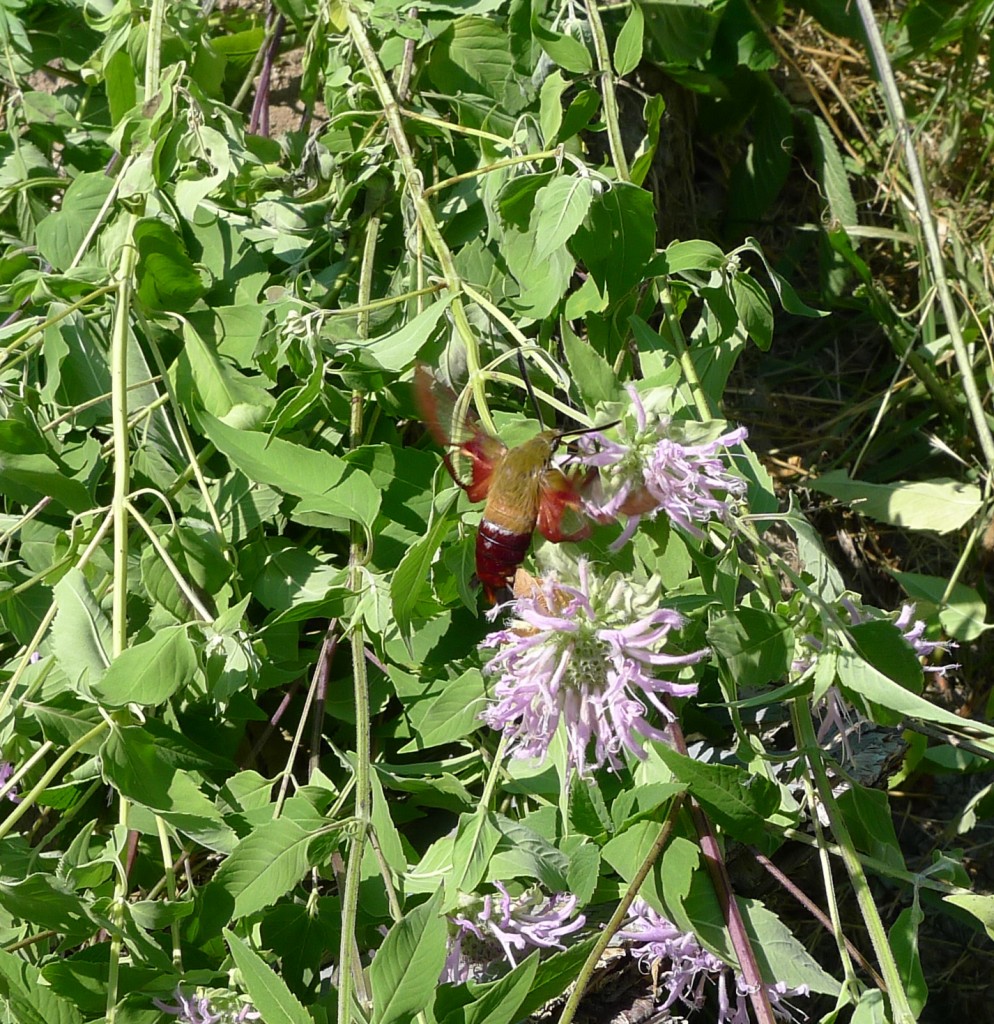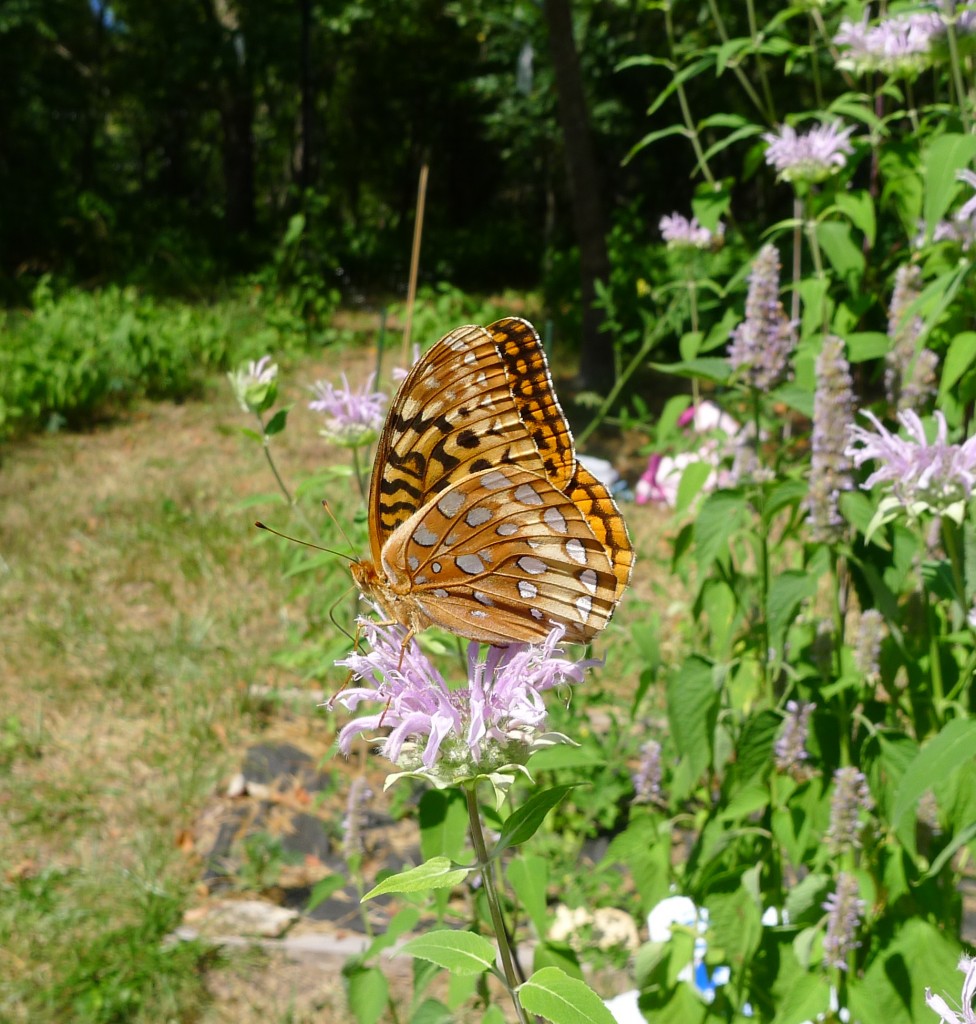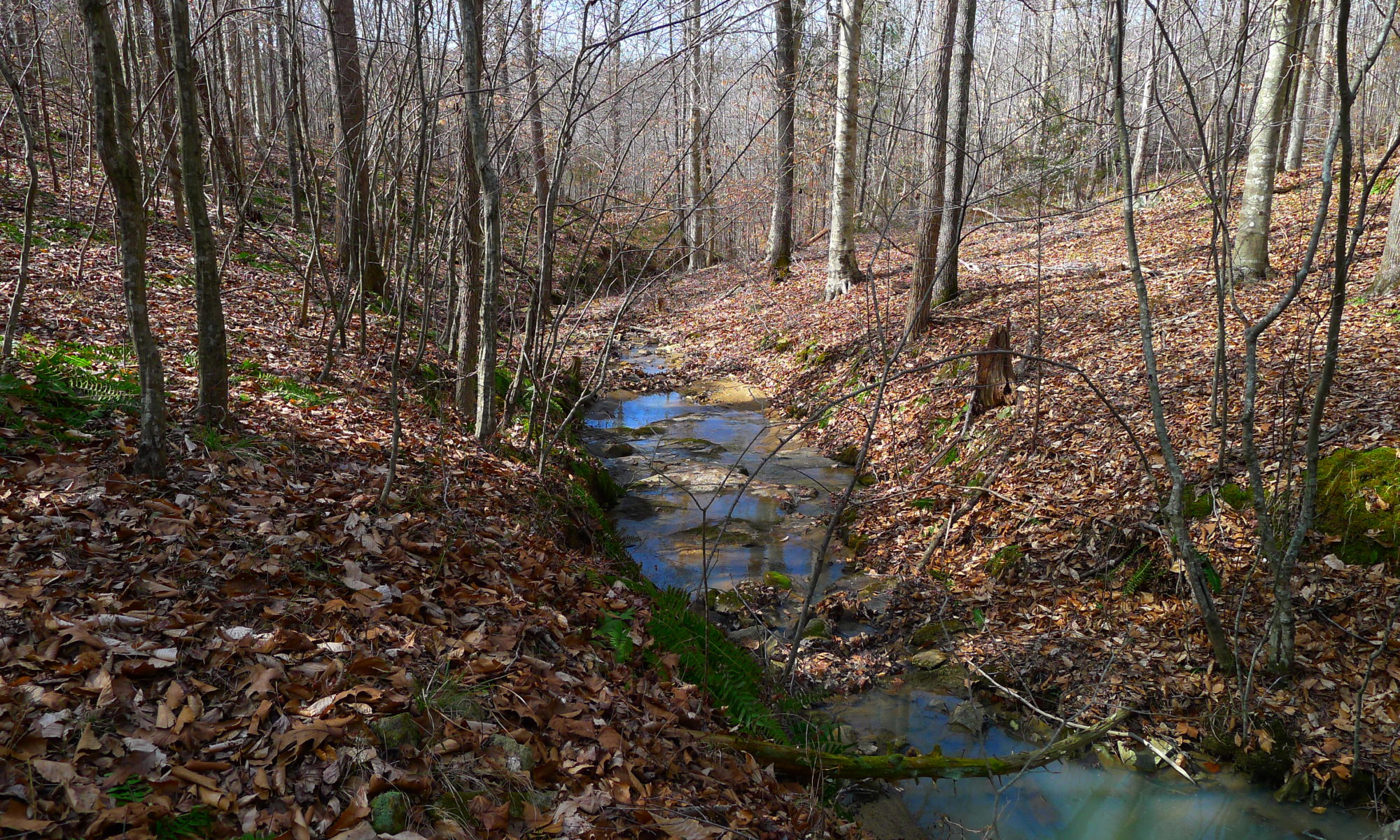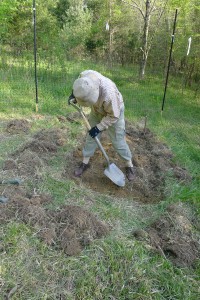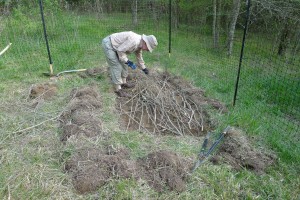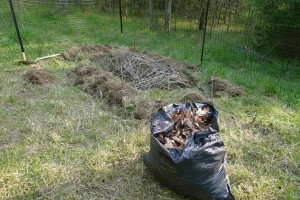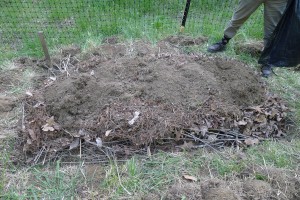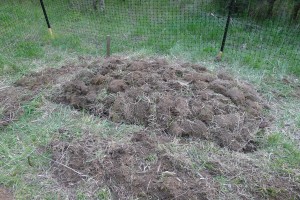A lot has happened since I last updated this blog – some successes, some losses… and some interesting critters. Oh, and I’ve met my new neighbour! He’s bought the other lot that was for sale when I bought my piece, and wants to use it just for hunting. Turns out that he used to hunt my land too, and so could tell me something of its history. The trees were harvested only about 20 years ago, but I don’t think it was completely clear cut – just the trees with valuable timber. Mine is a relatively young forest, then, and the bit near the road has some wild persimmon trees too. The neighbour begged me not to cut those when I make room for my access road. There’s no danger of that. Cutting those trees, I mean. The access road will happen soon, I hope. Just waiting for a call back…
And so on to the successes and losses. We’re talking plants here. Remember all those sweet little seedlings I was nurturing in the spring? Some have made it, but most struggled badly, withered and bit the dust. It could be the poor soil, it could be the meagre rainfall recently. It won’t have helped that I had to leave them to fend entirely for themselves for two and a half weeks while I traveled on business. But I’m blaming it on critters. I haven’t seen these critters as yet (though I’ve noticed droppings), but I’m guessing rabbits. The new neighbour reckons it could also be groundhogs. He also said that we have coyote and BOB CATS!!! Really excited at the thought of seeing a bob cat… even if they were the ones who ravaged my cat mint plants. Do bob cats share the culinary tastes of domestic felines? Anyway, to get to the point here, of all the plants I grew from seed (fennel, tomatoes, basil and holy basil, oregano and thyme, chamomile, catmint, borage, echinacea and marigolds) only the tomatoes, basils, marigolds and one of the thyme plants has made it. And maybe a borage, but only by a stalk. The tomatoes are coming along well, though – all varieties as far as I can tell. Matt’s Wild Cherries are doing particularly well, but there will also be radiator charlies and arkansas travelers and an heirloom variety (from saved seed). I fed them all today, and checked them for any signs of trouble. How can they not be happy after that?
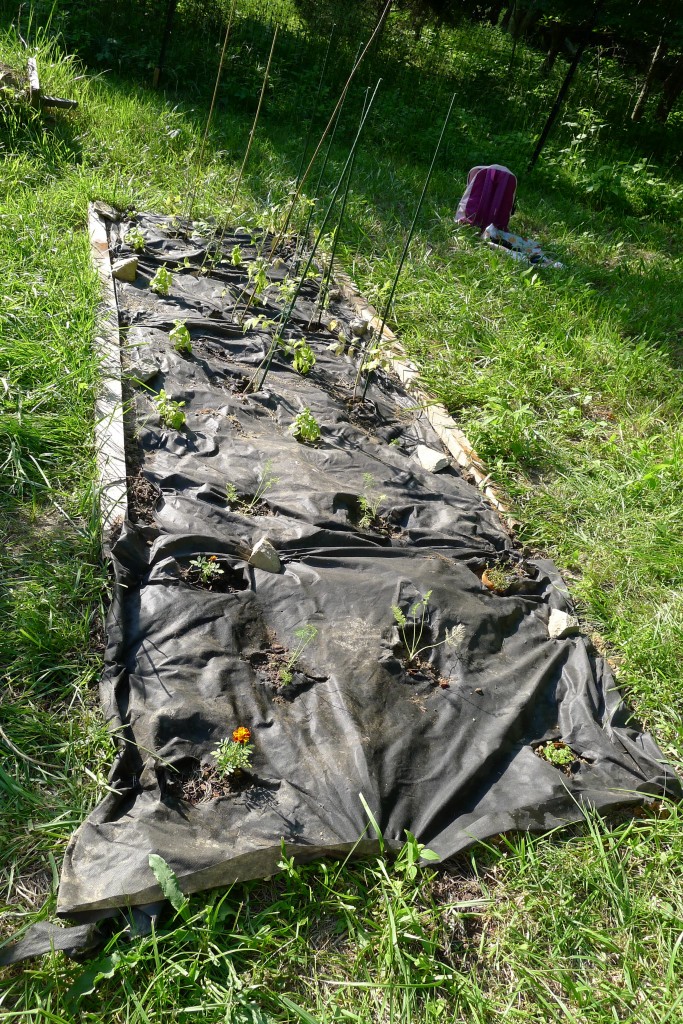
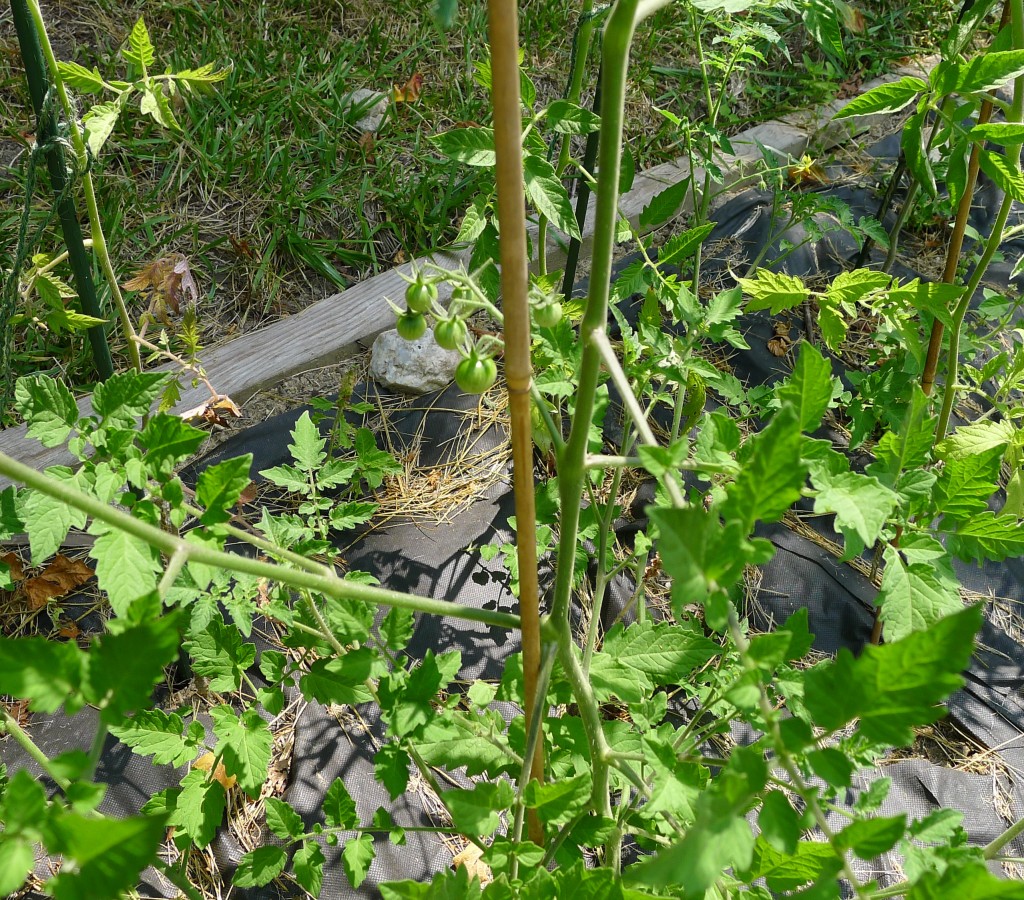
It’s hellishly hot here at the moment (100 degrees as I write this post). The heat wave arrived on Thursday, but it had been dry before that for several days. Storms are promised for next week. Let’s hope they materialize, because I’m getting worried about the water level in my rain barrel. (Dreaming of a little cabin with another rain barrel on the side…) The last few visits to the land have been all about watering things. I bought two more plants – an echinacea and a wild indigo – and fitted them in to my bee garden. That was a week ago. It was a bit of a squeeze, but the ground is so incredibly hard, there was no chance of me enlarging the bed. When I went back today, the indigo looked good, but the echinacea is only just hanging in there. Something’s been eating it, I think, and it needed water. But here’s another success story: I planted edamame in the hugelbeet and half the veggie bed last weekend (was it only last weekend?) and most of the seeds have now sprouted! *Really* hoping nothing is going to come along and eat them too.
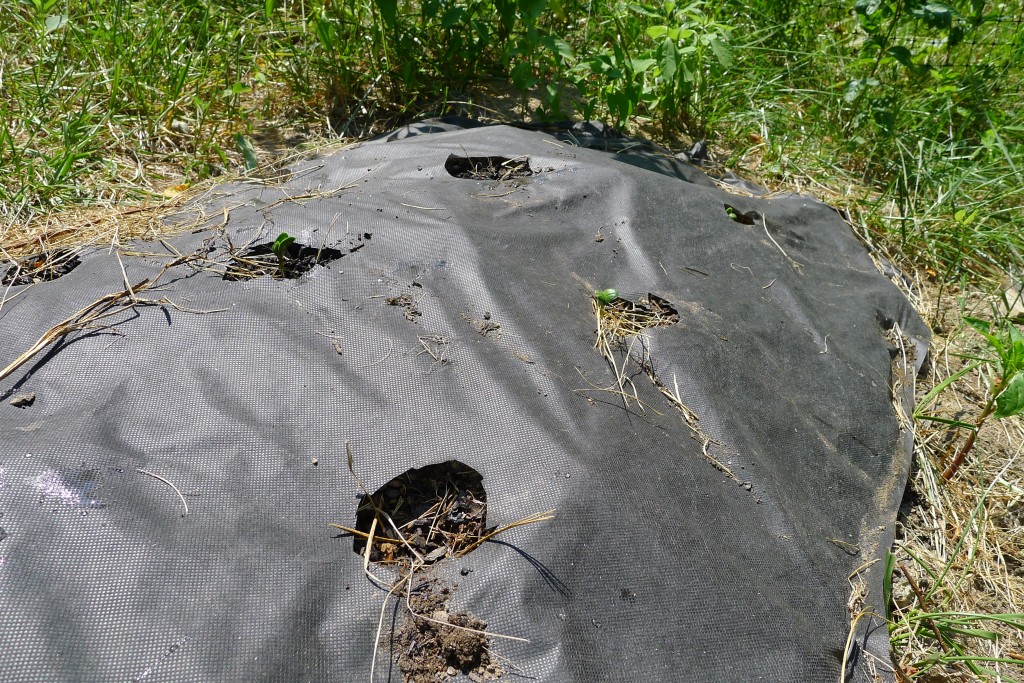
Critters, finally. Not the invisible rabbits and groundhogs, or the fabled coyotes and bob cats, but snakes and interesting insects. I saw the snakes on visits in May.
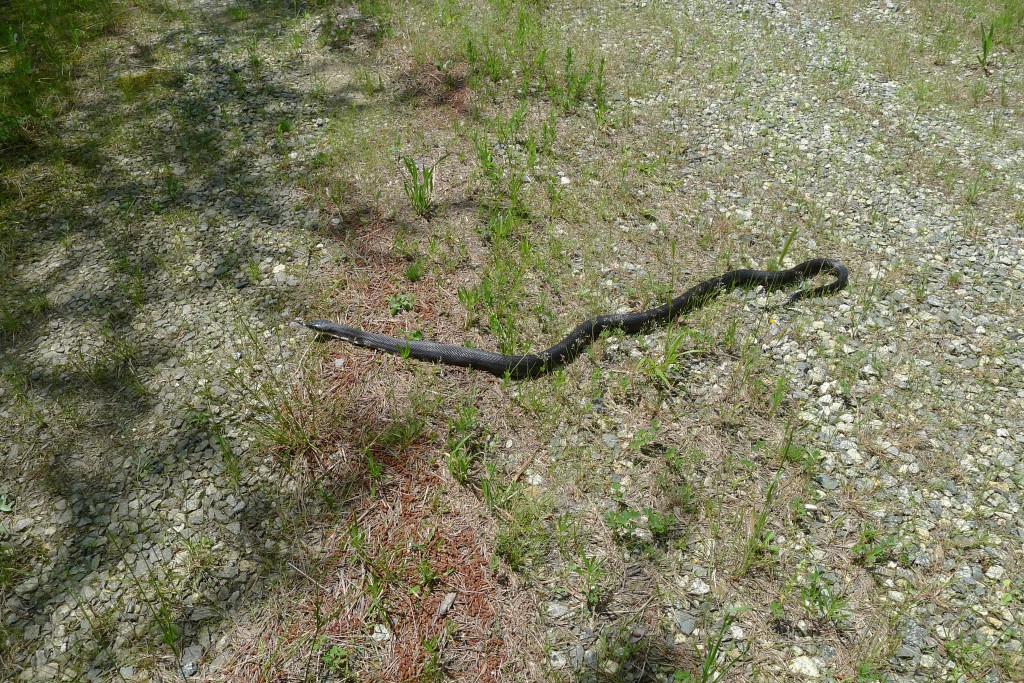
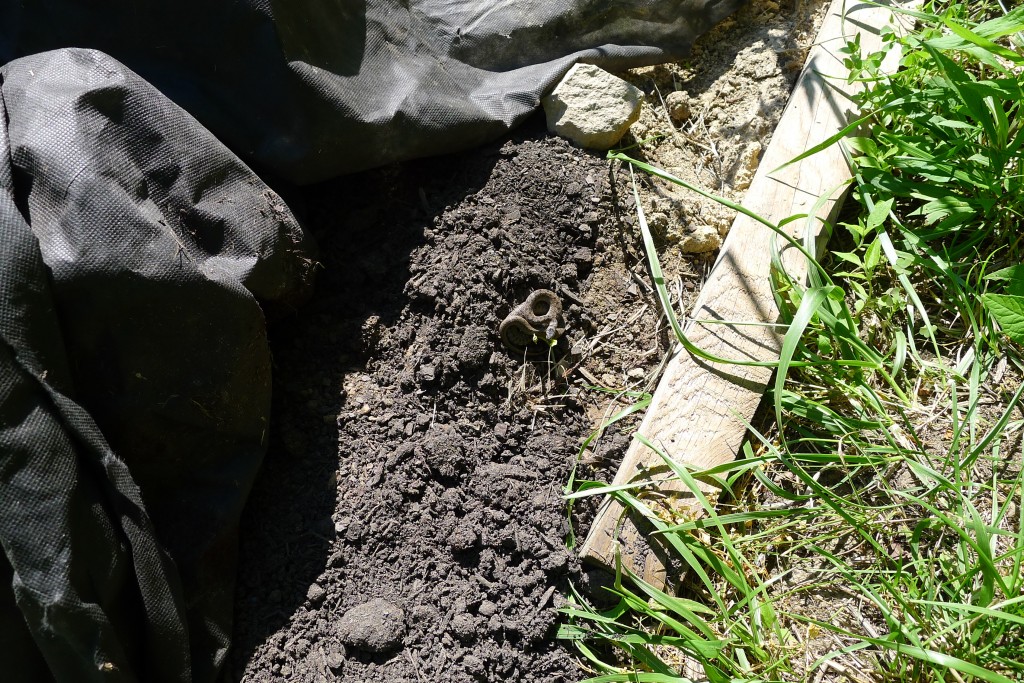
My parents helped me identify the first one as probably a black racer. Harmless. The second I discovered sheltering under weed barrier fabric in the vegetable bed when I went to plant my seedlings. I think it’s also a black racer but juvenile. And how about this for an insect! My bee garden is doing everything it should – swarming with different sorts of bees and butterflies (see also below) and this: a hummingbird moth!
